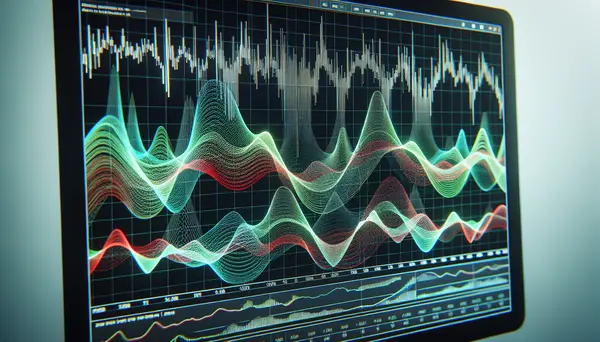Exponential Moving Average
Exponential Moving Average
Introduction to Exponential Moving Average (EMA)
The Exponential Moving Average, often abbreviated as EMA, is widely used in trading analysis. A type of moving average, it places more significance on the most recent data, making it more responsive to immediate price changes.
Understanding the Exponential Moving Average
The Exponential Moving Average helps traders track the trend of a stock, bond, or index over a specific period. Unlike the simple moving average, the EMA offers quicker reactions because the importance of the latest data is emphasized. Recognizing the shift in trend just in time is critical in trading, and that's the advantage of using EMA.
Calculating the Exponential Moving Average
Every trader should know how the EMA is calculated. Here's how it works. It starts with the calculation of a simple moving average. Then, it adds a multiplier to favor more recent prices. This way, the Exponential Moving Average includes all data points while assigning more relevance to the most recent ones.
Using Exponential Moving Average in Trading
EMA is a useful tool in trading. Its fast response to price changes makes it a favorite for short to medium-term traders. How does it help? Let's say you're a trader; when the price of a stock is above its EMA, it's a bullish sign. On the contrary, a bearish signal is sent when a stock's price is below its EMA. Therefore, EMA assists traders in identifying the possible direction of the price movement.
Interpreting the Exponential Moving Average
Not every trade aligned with the EMA will lead to profit; remember, it's merely an indicator, not a crystal ball. However, consistently using the Exponential Moving Average can guide your trading decisions and potentially calm your fears during uncertain market situations. In a nutshell, EMA can be an essential part of your trading strategies toolkit.
Blog Posts with the term: Exponential Moving Average

This article serves as a guide to understanding and using moving averages in cryptocurrency trading. Moving averages help simplify price data and provide insights into market trends, making them a valuable tool for making informed investment decisions. However, it is...

Crypto market analysis tools are crucial for traders and investors, providing real-time data integration from multiple sources to reveal trends and enable informed decision-making. These tools offer features like technical indicators, predictive modeling, and the ability to focus on specific...

Cryptocurrency trading involves speculating on price movements of digital currencies that exist encrypted online and can be traded via exchanges or through Contracts for Difference (CFDs). It's important to choose the right exchange, set up a secure account, manage your...

Bitcoin trading analysis involves understanding market behavior and using data like transaction histories, price charts, and volumes to predict price movements through technical or fundamental analysis. Technical analysis focuses on patterns in past data to forecast future prices, while fundamental...

The MACD Indicator is a powerful tool used by traders to predict market momentum shifts. It consists of three main components: the MACD line, the signal line, and the MACD histogram. By understanding and effectively using the MACD Indicator, traders...

Cryptocurrency trading can be overwhelming for beginners due to market volatility, but understanding technical indicators can make the process less confusing. Technical indicators are statistical tools that help traders interpret and predict price movement trends in financial markets, categorized into...

Crypto market analysis involves both qualitative and quantitative methods to assess cryptocurrency markets, focusing on supply-demand dynamics influenced by external factors like economic events and technological advancements. Advanced tools such as candlestick charts, moving averages, and RSI are crucial for...

The EMA trading strategy in crypto uses the Exponential Moving Average to capitalize on quick price movements by identifying potential trend reversals, with EMAs acting as dynamic support and resistance levels. Traders choose different EMA time spans based on their...

Market analysis in cryptocurrency trading is crucial for making informed decisions and involves two main approaches: technical analysis, which examines past price data to identify trends using tools like candlestick charts and MACD, and fundamental analysis, which assesses external factors...


